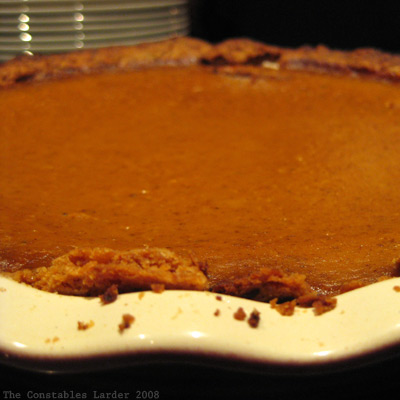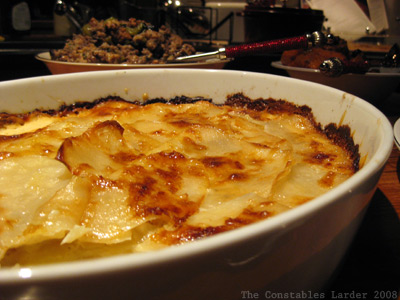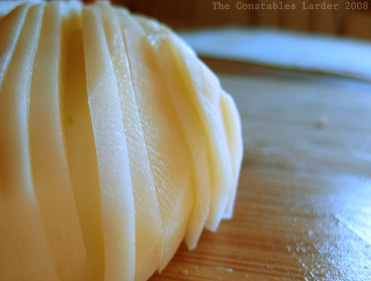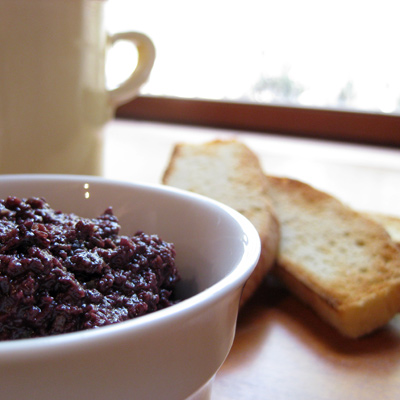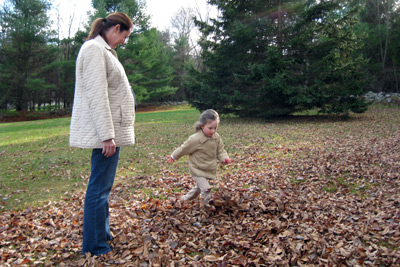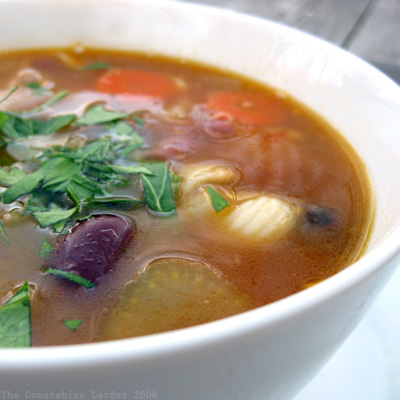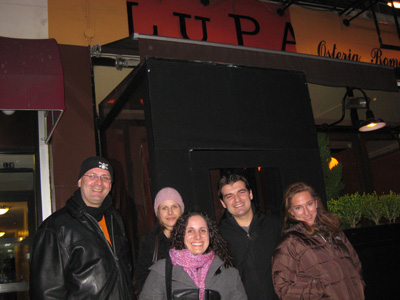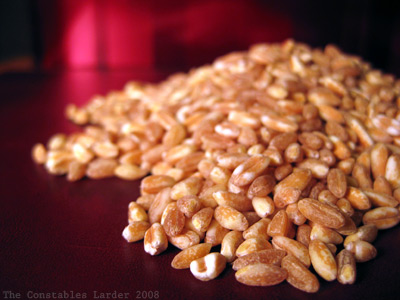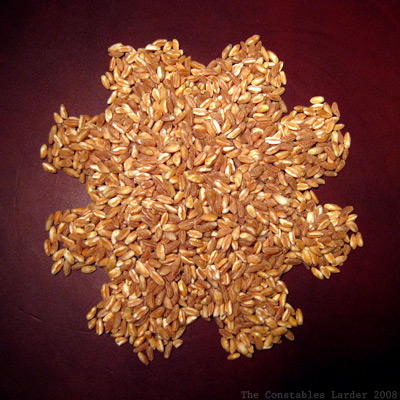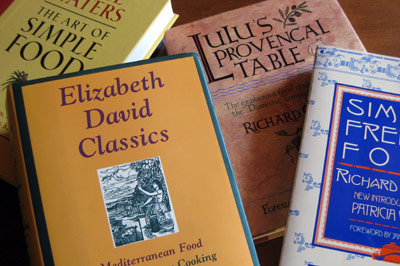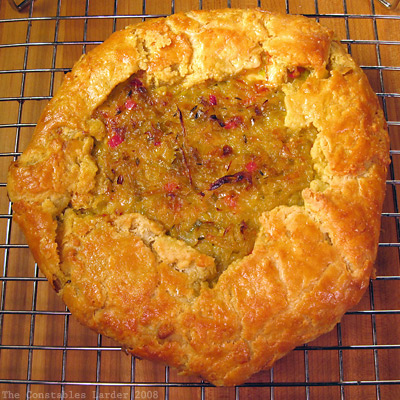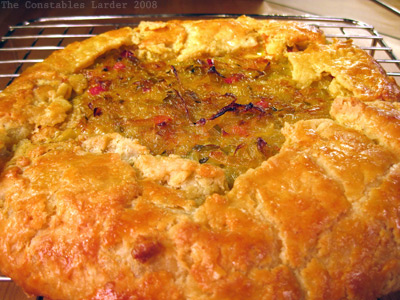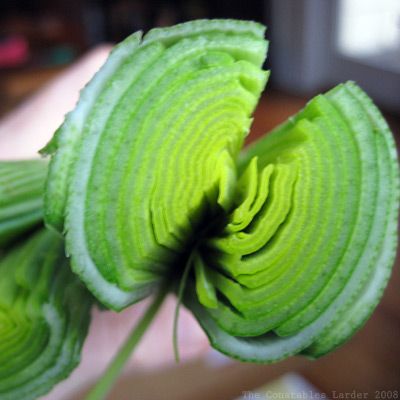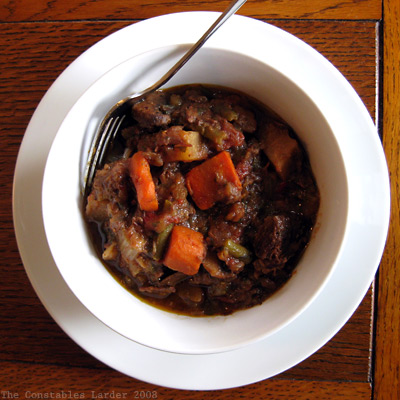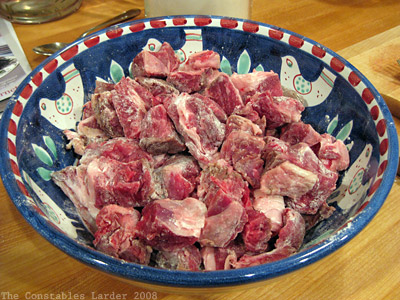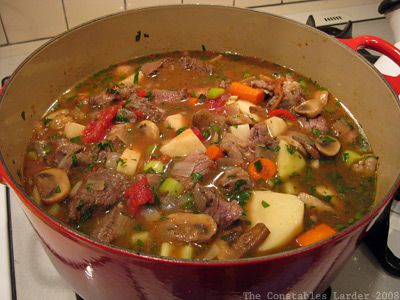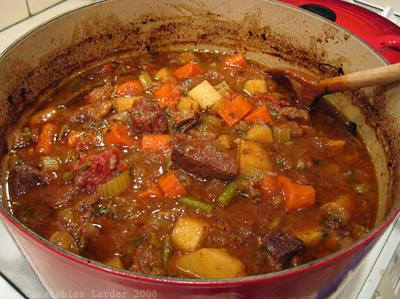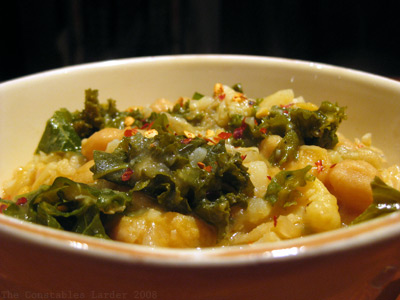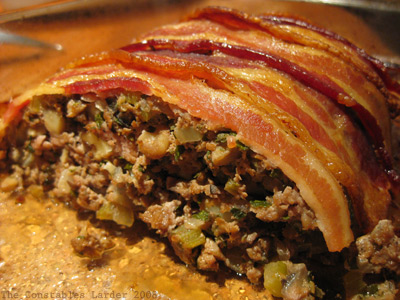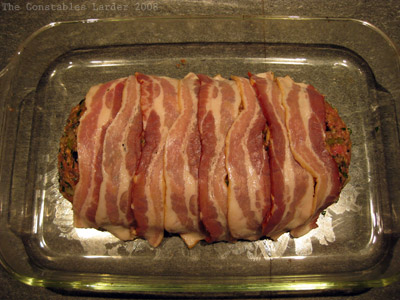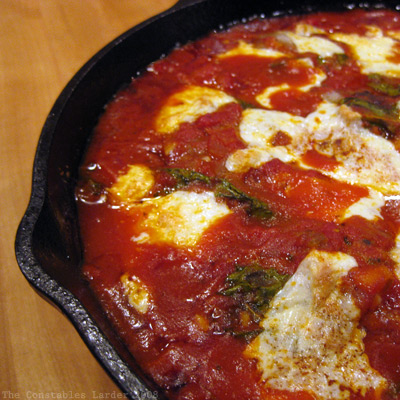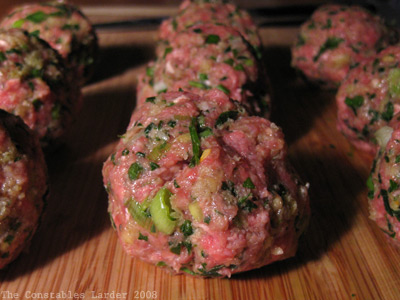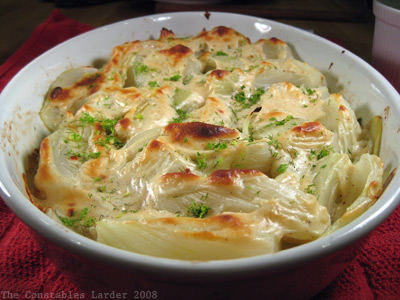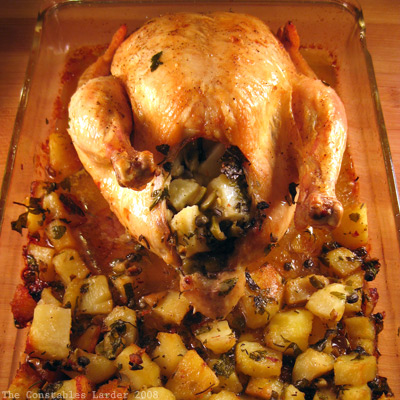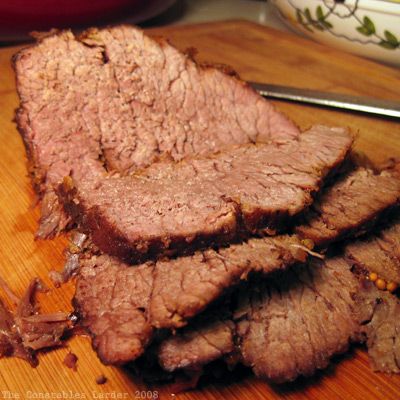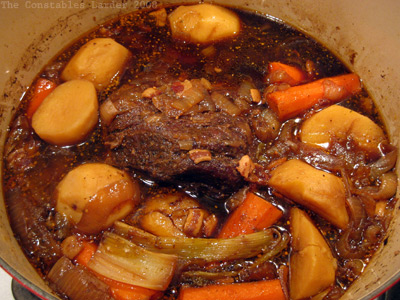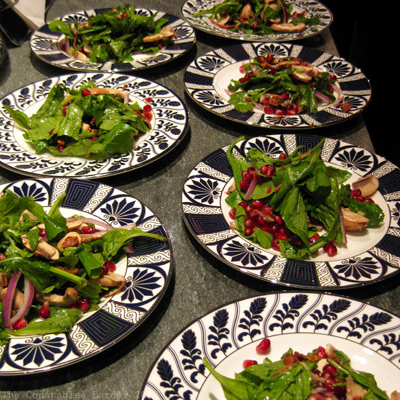
::: Constables Larder has moved to http://constableslarder.com :::
Part 3 concludes my posts on Thanksgiving dinner. It was a lovely meal with family, and while we fought with our oven (I think the thermostat has gone a little haywire), the results were really quite good. I did not take many pictures. My family enjoys this blog, but I had a feeling I didn't want to let my camera get between them and the food.
The last dish I wanted to highlight was one of my favorites: a very refreshing pomegranate and arugula salad Lisl put together, inspired by a salad recently posted by Sass & Veracity. The pomegranate seeds were gorgeous little festive jewels on the plate, and their tart sweetness complemented the arugula and vinegar really well.
2 bunches arugula leaves, carefully washed
seeds from 1 pomegranate
3 slices of good bacon, cooked then chopped
handful of cremini mushrooms, finely sliced
1/3 red onion, finely sliced (optional)
white wine vinegar and extra virgin olive oil
Combine all the ingredients in a bowl. Wisk vinegar and oil together (start with a 1/3, 2/3 split) with a pinch of salt and pepper and add vinegar or oil until you reach the desired flavor. Add some dressing and toss -- add just enough dressing so that everything is lightly coated but not drenched.
We served this with a Lucien Albrecht 2001 Gewurztraminer, from Alsace, courtesy of my father. I don't usually like sweeter wines at the start of a meal but this paired really well.
Other Thanksgiving Notes
One of the great highlights of the meal was the wine. My father was ridiculously generous and brought three amazing bottles up from his collection: two 1994 Cain Five reds, which we decanted for an hour before dinner and were just sublime, and a 1975 Chateau Suduiraut sauternes which was absolutely delicious (I am sipping it as I write this!).
I should note that we had opened a 1967 sauternes, also given to me by my father, at the 24-24-24 dinner we put on in September, but the wine had really lost most of its body. Not so with the Suduiraut, which I suppose should be expected given the fame of that vineyard. I really should follow in my dad's footsteps, buy some young sauternes, and save them for 30 years for future special occasions.
My sister and brother-in-law also brought some wonderful wine, but we didn't actually make it to those bottles. Luckily for me, they are still sitting on our shelf. To the cooks go the spoils!
More on food...
The stuffing came out really well. We had a really big bird, so decided to cook it with onion and lemon inside and do the stuffing on the stovetop. The recipe is here. In past I have used ground pork and my own spices, but since this was a gathering of my parents and sisters (along with husbands and kids), I decided to use Bob Evans breakfast sausage for the meat in the stuffing since that was the way my mother often makes it.
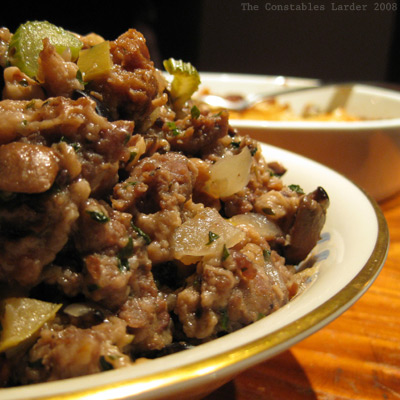
The element that made all the difference in the quality of the gravy and the stuffing was a really good turkey stock we made the day before. We had bought a turkey leg and thigh from the butcher, browned them really well in our dutch oven (such an important step!), and then simmered together with a large onion, several carrots and celery stalks, a couple bay leaves, a tsp of salt and water.
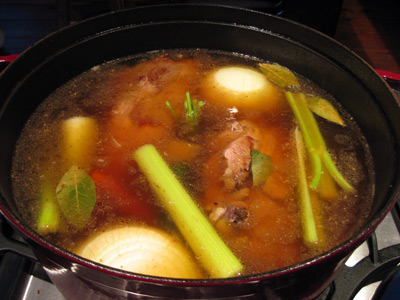
Lisl also made the cranberry-orange-ginger relish posted by Stacey Snacks, and she loved it. She also made a sweet potato concoction which was supposedly amazing, but the poor thing -- all my siblings and I have inherited the "no yams" gene from my father, and my daughter has inherited it from me! So it was a dish only for those who married into the family!
What I *did* really appreciate was Lisl's pumpkin pie, which we served with the sauternes and two delicious fruit tarts brought by my parents. All in all, it was a wonderful day of good food, good conversation, and the wonderful re-affirming of family.
I hope all of you had a marvelous Thanksgiving day as well!
